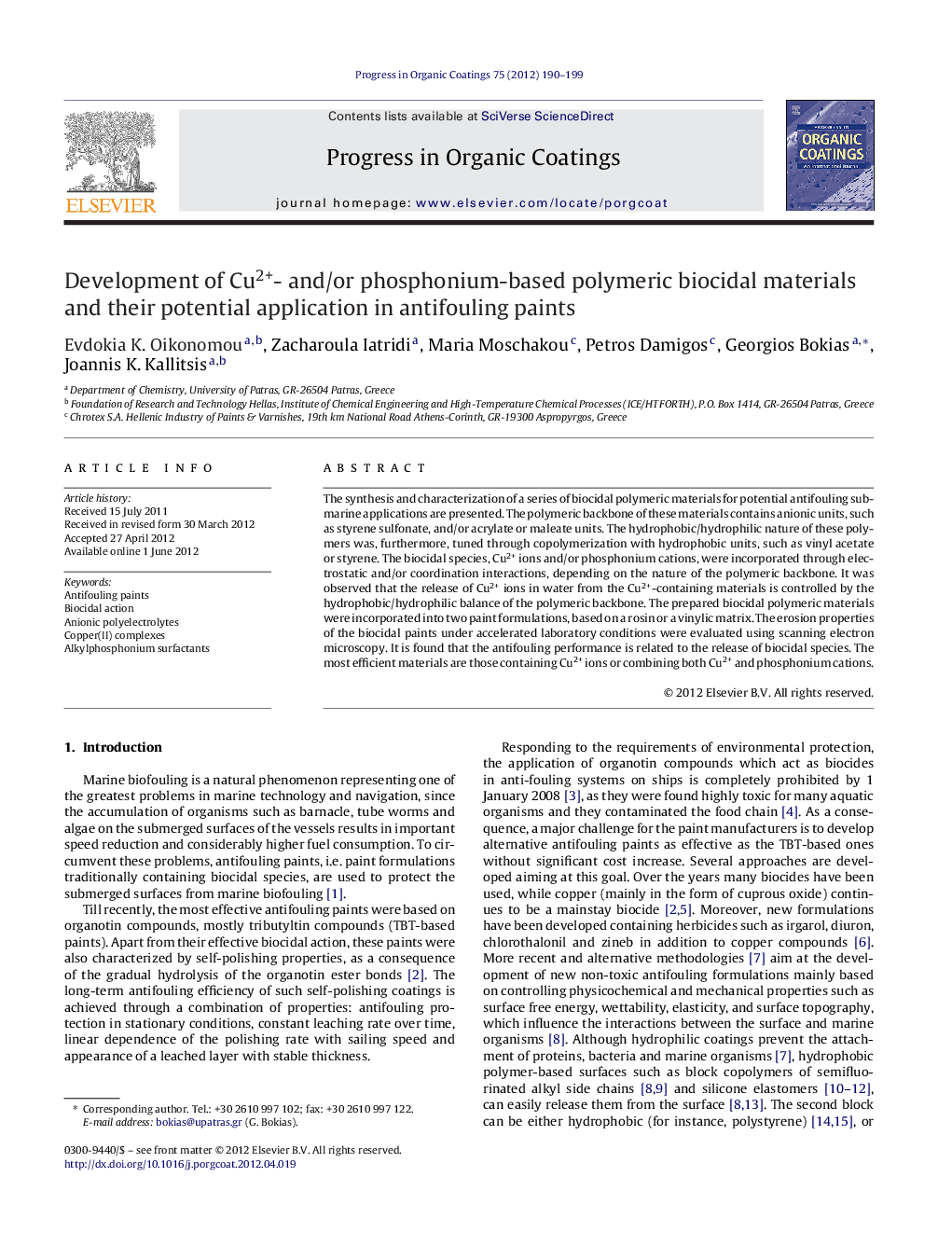| کد مقاله | کد نشریه | سال انتشار | مقاله انگلیسی | نسخه تمام متن |
|---|---|---|---|---|
| 693201 | 889870 | 2012 | 10 صفحه PDF | دانلود رایگان |

The synthesis and characterization of a series of biocidal polymeric materials for potential antifouling submarine applications are presented. The polymeric backbone of these materials contains anionic units, such as styrene sulfonate, and/or acrylate or maleate units. The hydrophobic/hydrophilic nature of these polymers was, furthermore, tuned through copolymerization with hydrophobic units, such as vinyl acetate or styrene. The biocidal species, Cu2+ ions and/or phosphonium cations, were incorporated through electrostatic and/or coordination interactions, depending on the nature of the polymeric backbone. It was observed that the release of Cu2+ ions in water from the Cu2+-containing materials is controlled by the hydrophobic/hydrophilic balance of the polymeric backbone. The prepared biocidal polymeric materials were incorporated into two paint formulations, based on a rosin or a vinylic matrix. The erosion properties of the biocidal paints under accelerated laboratory conditions were evaluated using scanning electron microscopy. It is found that the antifouling performance is related to the release of biocidal species. The most efficient materials are those containing Cu2+ ions or combining both Cu2+ and phosphonium cations.
Figure optionsDownload as PowerPoint slideHighlights
► Biocidal polymers, containing Cu2+ and/or phosphonium ions, have been developed.
► The release of Cu2+ ions is controlled by the hydrophobic/hydrophilic balance.
► Two paint formulations, based on rosin or a vinylic matrix, have been explored.
► Rosin-based paints show effective antifouling properties in field tests.
► The most effective materials are those containing phosphonium and/or Cu2+ ions.
Journal: Progress in Organic Coatings - Volume 75, Issue 3, November 2012, Pages 190–199